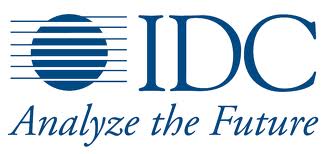 Singapore and Hong Kong, June 3, 2014 – International Data Corporation (IDC) announces today that it expects the Asia/Pacific Bring Your Own Device (BYOD) market to continue strong growth in 2014 and into 2015 as consumer smartphone and tablet continue gain market across the region.
Singapore and Hong Kong, June 3, 2014 – International Data Corporation (IDC) announces today that it expects the Asia/Pacific Bring Your Own Device (BYOD) market to continue strong growth in 2014 and into 2015 as consumer smartphone and tablet continue gain market across the region.
In IDC’s latest BYOD studies, “Asia/Pacific (Excluding Japan) Bring Your Own Device End-User Survey 2014” and “Asia/Pacific Bring Your Own Device 2014–2018 Analysis and Forecast”, BYOD is defined as part of enterprise mobility.
The practice of BYOD refers to devices that users have personally purchased with their own funds, without help from the employer. The employer is not obligated to subsidize any part of the device nor is it responsible for supporting the devices’ hardware and software.
IDC’s findings show that across Asia/Pacific, mobile devices utilized under the BYOD model has accounted for 22.5%, 4.9% and 11.7% of all consumer smartphone, tablet and notebook PC shipped in 2013, respectively.
“The momentum of BYOD has definitely increased over the past 12 month and IDC expects it will continue the upward swing in 2014 and well in 2015,” says Ian Song, Research Manager for Enterprise Mobility at IDC Asia/Pacific.
“With the user experience of mobile devices improving, end users can start to perform more complex task on those devices. In addition, the price of device has also dropped to a level where increased proliferation becomes possible.”
Song notes that enterprises across the region are also becoming more open to the idea of BYOD as a way to drive mobility in their organizations.
“Close to 60% of all surveyed organizations across Asia/Pacific stated that they have some kind of mobility policy that cater to the practice of BYOD.”
He observes that BYOD in Asia/Pacific is being driven primarily by the usage of personally owned smartphones in the enterprise.
IDC expects that close to 155 million consumer smartphones will be used in the BYOD model across the region in 2014, a year-on-year growth of 40.4%. Tablet BYOD will grow to nearly 4 million units, a year-on-year growth of 62.7%. Notebook PC, on the other hand, will see a steep decline as the PC industry slows down and BYOD users migrate to other BYOD platforms.
IDC expects just 3.1 million units of consumer notebook PC will be utilized under the BYOD model, a year-on-year decline of 20%.
However, IDC does not anticipate the BYOD growth will last.
“BYOD smartphone utilization will peak around 2016 to 2017, and tablets will peak around 2017 – 2018,” says Song.
He explains that the bottom line is BYOD is a compromise between users and the enterprise.
“While BYOD has a capability to streamline some of the internal operations, personally owned devices will not be able to drive core business functions without compromising security and management.”
To this end, IDC believes that enterprises across Asia/Pacific will begin to revisit the corporate-liable model with a twist: giving employees options to chose the device they want to use.
IDC calls it Choose Your Own Device (CYOD). CYOD may eventually take some of the steam away from BYOD, but IDC believes that most organizations will adopt a hybrid BYOD/CYOD policy that address device ownership and usage base on requirement.
“IDC expects that developed markets like Australia or Singapore will see a decline in BYOD adoption as early as the first half of 2016 as mobile devices saturate the market and this hybrid model begin to take hold,” says Song.
“Developing markets will take quite a bit longer before smartphone and tablet BYOD start to decline as these types of devices are still in high growth phase in those markets, and maturity toward enterprise mobility is low.”
About IDC
International Data Corporation (IDC) is the premier global provider of market intelligence, advisory services, and events for the information technology, telecommunications, and consumer technology markets. IDC helps IT professionals, business executives, and the investment community make fact-based decisions on technology purchases and business strategy. More than 1,000 IDC analysts provide global, regional, and local expertise on technology and industry opportunities and trends in over 110 countries. For more than 49 years, IDC has provided strategic insights to help our clients achieve their key business objectives. IDC is a subsidiary of IDG, the world’s leading technology media, research, and events company. You can learn more about IDC by visiting www.idc.com
